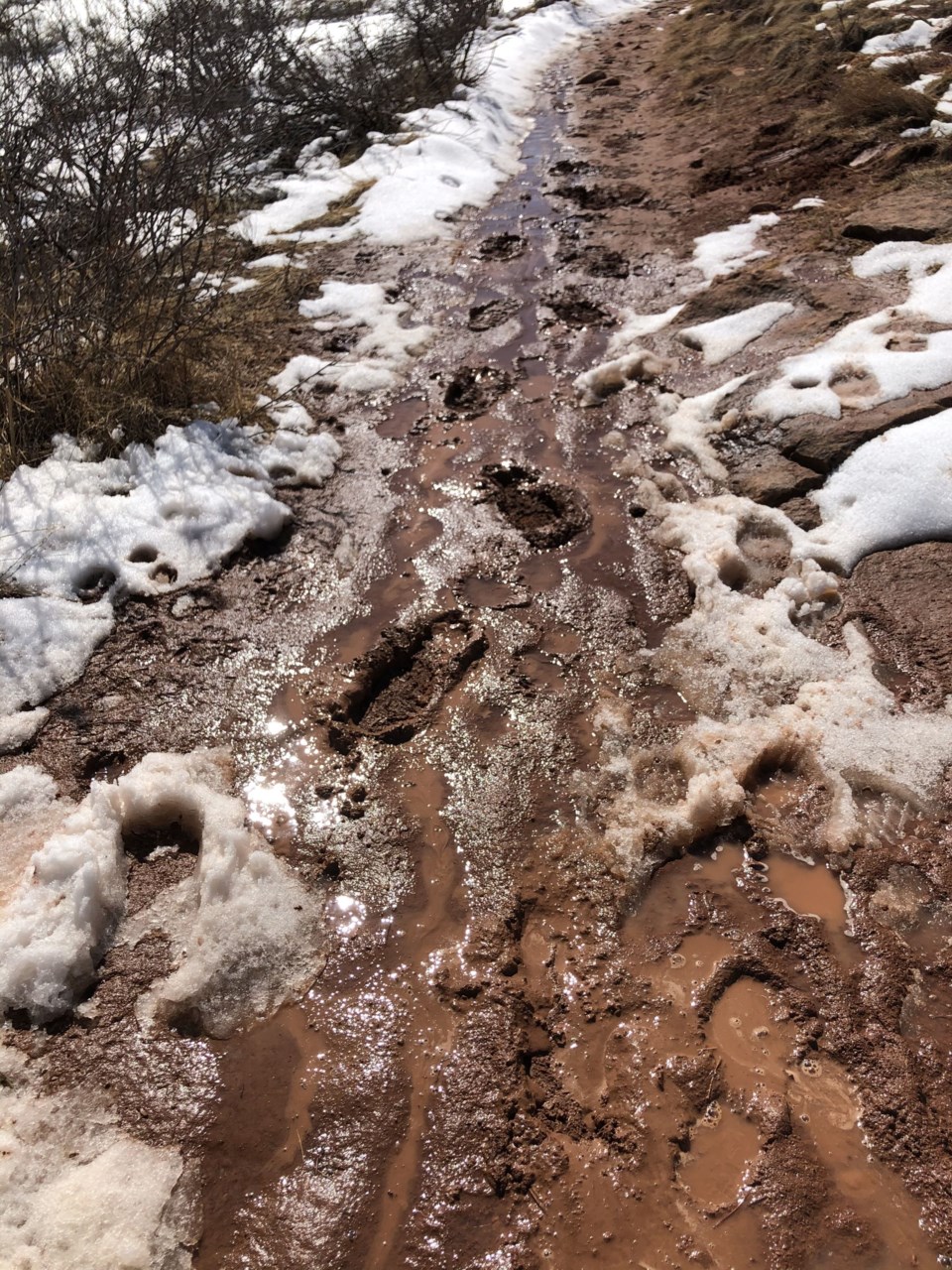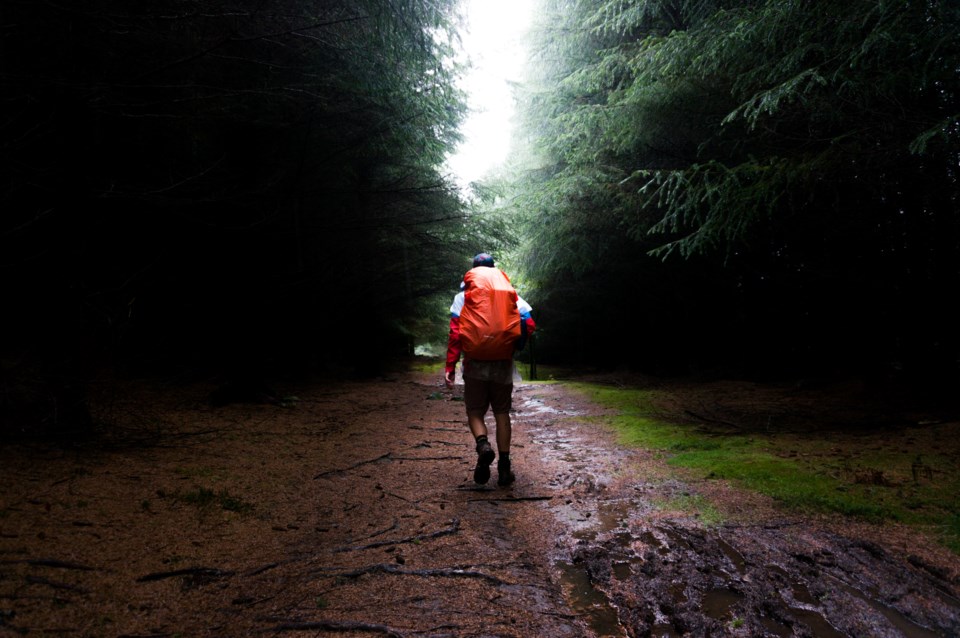With the start of spring in Colorado comes an almost-violent whiplashing of winter mixed with summer. Some days there’s heavy wet snow and other days knock on the door of 70 degrees, leaving many itching to get outside. Unfortunately, that mix of heavy snow and warm sunny days leave nearby parks and trails caked in almost quicksand-like mud, and organizations such as Boulder County Parks and Open Space are forced to close trailheads and even entire parks.
“We like to proactively close the trails so we’re not even giving the public a choice in the matter,” said Boulder County Senior Park Ranger Erin Hartnett. “But if people get out there before we even have a chance to assess the trails and implement a closure, we usually say if you start running into mud, turn around, especially if it starts sticking to your shoes or your bike.”
For hikers, trail runners and mountain bikers, it’s always disappointing to know they cannot use some of their favorite nearby trails, but it’s for a good reason.
“If you continue on that trail you’re going to be causing pretty drastic damage that could require a lot of maintenance and a lot of trail work to repair,” Hartnett said.
Boulder County taxpayers not only pay for trail maintenance teams, but people from the area also annually volunteer thousands of hours of work to help rebuild and maintain trails. Similar work also is done in city parks in Longmont and Boulder. The county works to be proactive to avoid too much damage, but it also hopes those who use the trails will do so with some personal responsibility.
“In the springtime, trails are much more vulnerable and much more sensitive because of cycles of snow,” said Susy Alkaitis, deputy director for the Leave No Trace Center for Outdoor Ethics. “Trail conditions are certainly an issue in our county and we have so many people who love to be outside.”
While based in Boulder, Leave No Trace is a nationally recognized organization focused on educating people about caring for the outdoors and preserving them for other visitors and future generations.
Alkaitis said a big problem for many trails is caused by people trying to avoid the mud. This leads to trail widening and ruts that can increasingly grow and cause puddling, ultimately causing more damage. If there’s no way to avoid muddy spots and they cannot turn back, she said trail users need to be prepared to get dirty because the best way forward is through the mud. Straight ahead through the mud also helps avoid trampling vegetation.
“When people get out there they can be sort of surprised about what’s out there,” Alkaitis said. “Be prepared to run down the middle of the trail if it’s wet and muddy, or consider another loop altogether.”
 This photo shows muddy conditions on the Eagle Wind Trail at Ron Stewart Preserve at Rabbit Mountain Open Space. Courtesy Boulder County Parks and Open Space
This photo shows muddy conditions on the Eagle Wind Trail at Ron Stewart Preserve at Rabbit Mountain Open Space. Courtesy Boulder County Parks and Open SpacePlanning before you go also can help protect trials and prevent a long drive to a muddy or closed park. For instance, south facing trails in Boulder County are more likely to be dry because of the ample sunshine they receive. Hartnett also recommended checking the Boulder County Parks and Open Space website or its Twitter or Facebook feeds to get the latest information on trail conditions. It also has an app that shows users real-time trail closures.
County officials say a number of factors play a role in closing trails, and most of them are weather related. Strong sun, windy days and avoiding more snow are key in giving a trail time to dry out.
In the meantime, it’s best to stay off trails that could be muddy and find either gravel or paved paths. The app also can serve as a resource for all public recreation trails and trailheads in Boulder and Broomfield counties.
“It’s important to be patient with the trails in order to protect them,” Hartnett said. “I know the weather is beautiful and you really want to get out there but just have some patience and let them dry out. This way you’ll really be helping us protect them”



